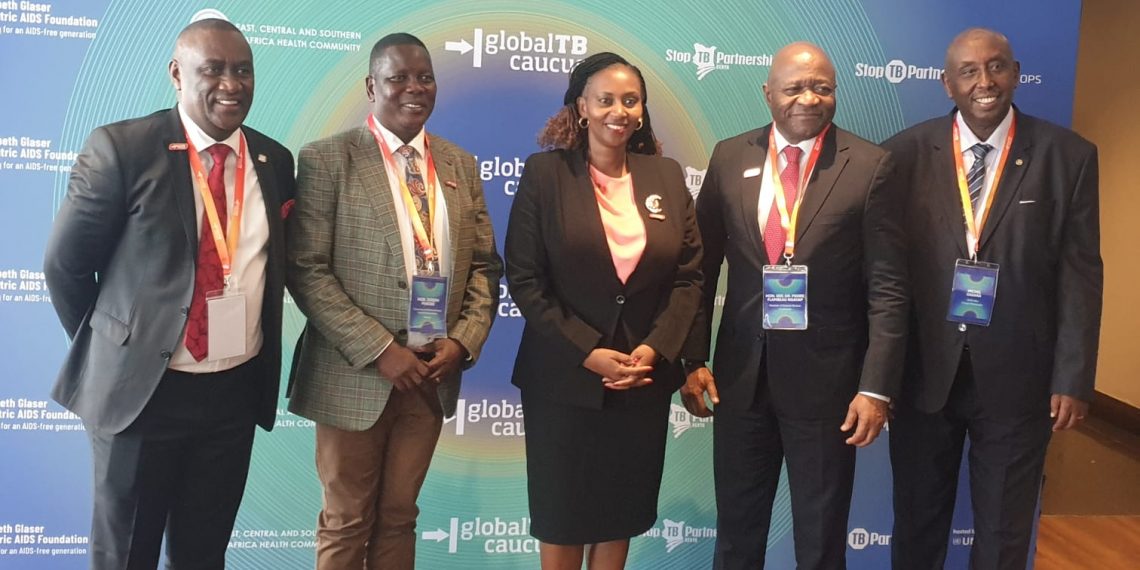Kenya should integrate contact investigation as a key element for successful implementation of Tuberculosis (T.B) elimination goals since it can bridge gaps in diagnosis, thereby improving access to tuberculosis treatment inorder to reduce morbidity and deaths especially in children.
According to Dr Eliud Mwangi, Kenya country director for the Elisabeth Glasier Pediatric AIDS Foundation (EGPAF), Tuberculosis (TB) in children is a neglected aspect of the TB epidemic. Screening, diagnosis, and treatment of tuberculosis (TB) in children remain far from optimal – and in many respects lag behind what is done for adults.
“Contact Investigation has been confirmed to be a critical intervention for pediatric TB management, being a key gateway for both case detection and delivery of TB prevention therapies and its roll-out and scale-up should be prioritized by national TB programs.”
Eliud explains that because of low uptake of new technologies in most part of the country to diagnose pediatric T.B with the traditional methods of pediatric diagnosis proving unreliable, prevention of active TB disease by TB preventive treatment is a critical component of the WHO End TB Strategy and efforts to eliminate TB. Roll-out of preventive treatment (TPT) services is feasible and technically less challenging than building capacity for pediatric TB diagnosis
He urges that countries should fully adopt contact investigation interventions to be implemented as part of a larger case finding strategy as well as a key gateway to TPT services.
“Even with the ongoing efforts to improve diagnosis, and thereby improve access to pediatric tuberculosis treatment to reduce morbidity and deaths, approximately 96 percent of pediatrics who die of T.B do not have access to diagnosis therefore hindering treatment initiations despite the fact that T.B is treatable.”
“The contact investigation can be successful to deliver both TPT and screenings with adequate advocacy and careful planning of adequate resources, in particular, human resources such as CHWs coupled with strong processes for management and coordination of these activities.”
Eliud says that community health workers (CHWs) can be used to reach out to identify child contacts of people who might be having T.B and are not aware of it or those people who have had exposure to TB and retaining them in care.
He adds, “Globally it is estimated that about 1.2million children had T.B in 2021 and only 44 percent were diagnosed, meaning we are only diagnosing 4 out of 10 children with T.B.”
He adds that “Because diagnosing active TB disease in young children is a challenge, averting new pediatric TB cases by delivering preventive treatment (TPT) is of strategic importance to decrease the overall burden of pediatric TB disease.”
He was speaking at Africa T.B summit 2023, convened by Global TB Caucus, an international network of 2,500 parliamentarians in more than 150 countries driving the political will to end TB, gathered in Nairobi for the two-days ahead of the United Nations High-Level Meeting (on Universal Health in New York in September this year, which will provide an opportunity for countries and stakeholders to reinvigorate progress towards achieving health for all.
According to Stephen Mule, Member of Parliament Kenya, Chair of Africa Parliamentary TB caucus, availability of advanced Molecular technology diagnostic tests in Kenya will now make diagnosis of childhood TB easier and foster identification of more childhood TB patients.
Hon Mule said that Kenya has already started implementing the molecular diagnostics for tuberculosis recommended by WHO in 2013 and introduced new shorter drug regimen for T.B and child friendly T.B drugs.
“We have deployed 38 Truenat machines by Molbio in various public health facilities across the country under United States Agency for International Development (USAID) ‘the introducing New Tools Project’ and increased GeneXpert by Cepheid to 238 machines that will help in diagnosis of child T.B especially in the hard-to-reach areas,” he said adding that, “We have also implemented introduction of child friendly T.B syrups.”
Mule said that Kenya is making a good progress in the fight against T.B as the country have seen a roll out and adoption of new treatment regimens for T.B and timely adoption of World Health Organization (WHO) recommendations on T.B prevention, treatment and diagnostics in Kenya.
Kenya has continued to make great strides in the fight against the disease, recording a tremendous reduction in TB-related deaths.
According to. Ms Evaline Kibuchi, a public health advocate and a national coordinator of the Stop TB Partnership-Kenya, the country reported about 33,000 TB-related deaths in 2019 compared to 21,000 in 2021 registering a decline of mortalities, according to the latest WHO global TB report.
However, about 50 per cent of people infected with the disease remain undiagnosed. This poses a great danger because they continue to infect others, thus risking death if those infected remain undiagnosed and untreated
According to Ministry of Health, the incidence of drug susceptible TB was estimated at 140,000 people, while the incidence of drug-resistant TB was estimated at 2,500.















